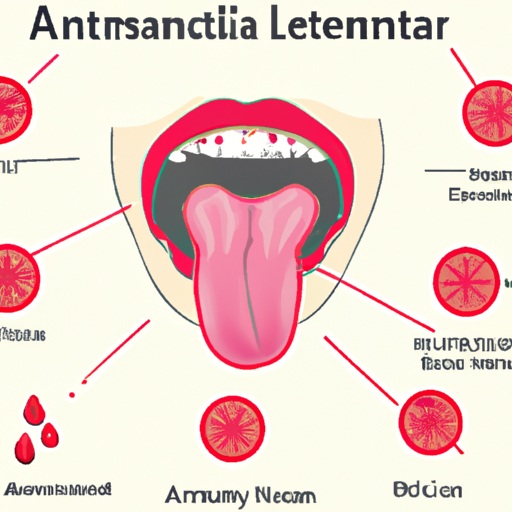Uncategorized
Symptoms, Causes, and Treatments of Tongue Anemia
- Anemia Tongue: Symptoms, Causes, and Treatments
- Clinical Trials for Anemia
- Anemia Tongue Explained
- Who Does Glossitis Affect?
- Common Symptoms of Anemia Tongue
- What is Causing an Anemic Tongue?
- Does Anemia Cause Glossitis?
- What Else Can Cause Glossitis?
- What Does Glossitis Look Like?
- Forms of Glossitis
Anemia Tongue: Symptoms, Causes, and Treatments
Anemia tongue or glossitis is a condition that causes pain and changes in the tongue’s appearance. This guide focuses on what symptoms to expect if you develop an anemia tongue, the causes, and what treatments are available to relieve or eliminate it.
Clinical Trials for Anemia
Have you considered clinical trials for Anemia? We make it easy for you to participate in a clinical trial for Anemia, and get access to the latest treatments not yet widely available – and be a part of finding a cure.
Anemia Tongue Explained
Usually, anemia tongue is a benign condition. Adding nutrient supplements to your diet or treating underlying causes can help relieve its symptoms. The tongue’s appearance may cause some anxiety, but this condition is not generally life-threatening. Even if glossitis is the symptom of a more severe condition (for example, diabetes), as long as the diabetes is diagnosed and treated, anemic tongue symptoms will be relieved.
Who Does Glossitis Affect?
Glossitis affects people with a poor diet that does not include enough iron or other nutrients. In addition, those with an underlying condition, for example, sickle cell anemia, infections, or neuropathy caused by diabetes, can develop glossitis.
Common Symptoms of Anemia Tongue
Because not enough nutrients are getting to the tongue, this can cause symptoms such as:
- Changes in color and texture of the top of the tongue, the papillae, and taste buds
- General reduction of papillae, which are the bumps on the tongue that grip food
- Enlargement of the fungiform papillae, located around the tip of the tongue
- Changes in color and texture to the undersurface of the tongue, connected to and closest to the floor of the mouth
- Lesions or ulcers
- Redness
- Swelling
- Reduced sense of taste
What is Causing an Anemic Tongue?
Anemia can generate several symptoms, including anemia tongue, or glossitis. When anemia tongue occurs, insufficient oxygen and nutrients reach the tongue, causing inflammation and other symptoms.
Does Anemia Cause Glossitis?
When there is insufficient iron to form hemoglobin, a crucial part of the red blood cell, this iron deficiency can cause glossitis. Pernicious anemia can also cause glossitis. The production of red blood cells depends on the availability of vitamin B12. When there is a deficiency of vitamin B12 (cyanocobalamin), there won’t be enough red blood cells to carry needed oxygen and nutrients throughout the body, possibly causing glossitis. Nutritional deficiencies, such as pernicious anemia, are a common cause of this condition.
What Else Can Cause Glossitis?
Herpes viruses or bacterial, fungal, or parasitic infections can cause glossitis. Glossitis can occur by taking medications such as ACE Inhibitors, albuterol, organosulfur antimicrobial or antibacterial drugs, oral contraceptive pills from elevated levels of hormones, or lithium carbonate. Other examples of factors that can cause glossitis are various conditions, including anxiety, neurological system disorder, psoriasis and other autoimmune conditions, diabetic neuropathy, acid reflux, conditions that cause fissures or patterns of patches to form on the tongue, Down syndrome, allergies or adverse reactions to food, traumas (chronic dental trauma, mechanical irritations, burns), and lifestyle situations (exposure to irritants: alcohol, spicy food, and tobacco, poor hydration, protein-calorie, iron, or vitamin malnutrition).
What Does Glossitis Look Like?
Glossitis can change from the pinkish color of a regular tongue to more of a reddish color. It may also have white patches or surrounding white bbuys caused by the reduction of papillae. The tongue can have a smooth, shiny, dry appearance because of the decrease of lingual papillae, which contain the taste buds and secrete some of the fluid in saliva. Glossitis causes red, plaque-like lesions that will usually be present in the center of the top of the tongue to appear. Cracks or fissures can also be present all over the tongue, and swelling can occur too.
Forms of Glossitis
The observation of appearance can differentiate the different forms of glossitis. In

 Skip to content
Skip to content


